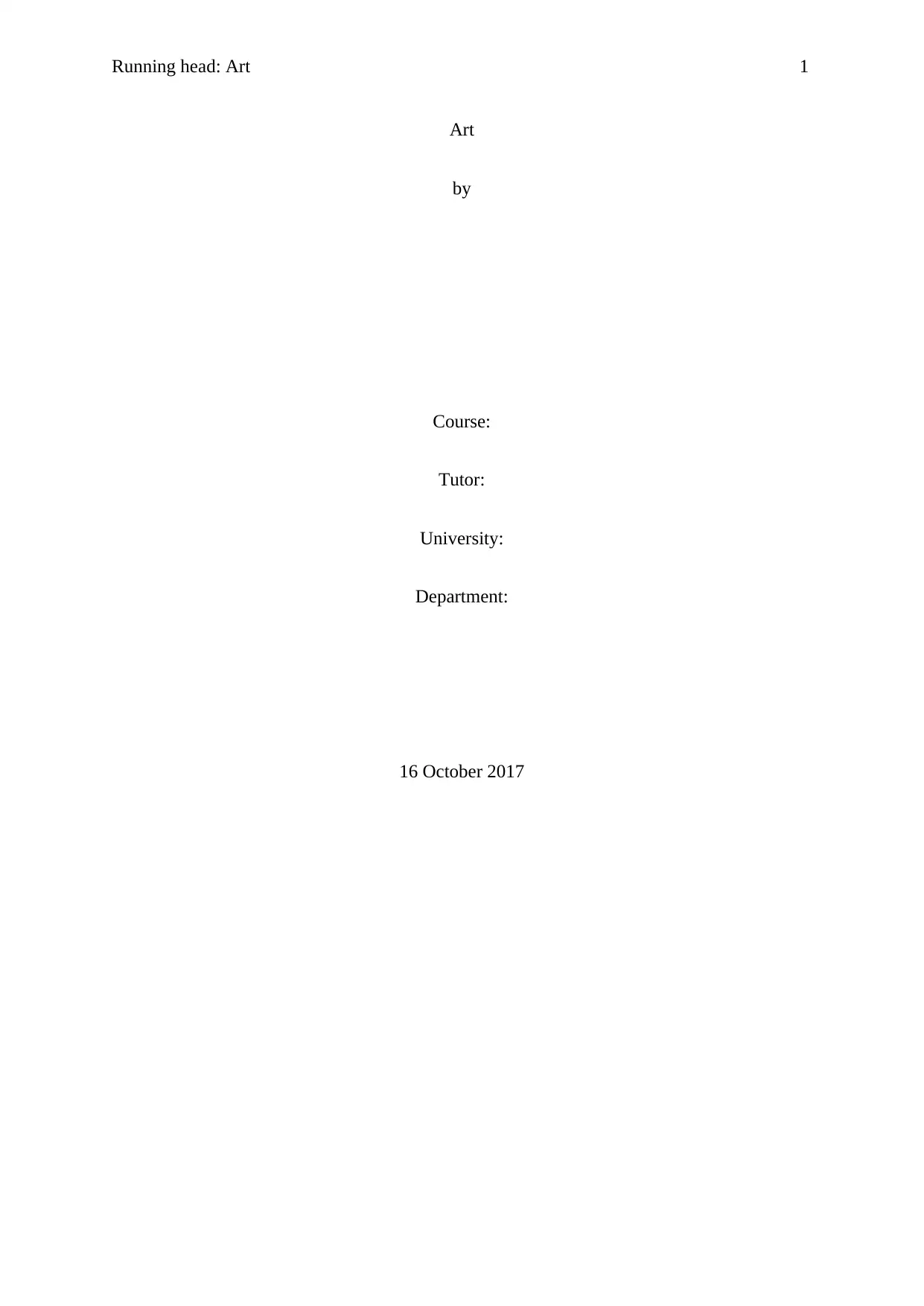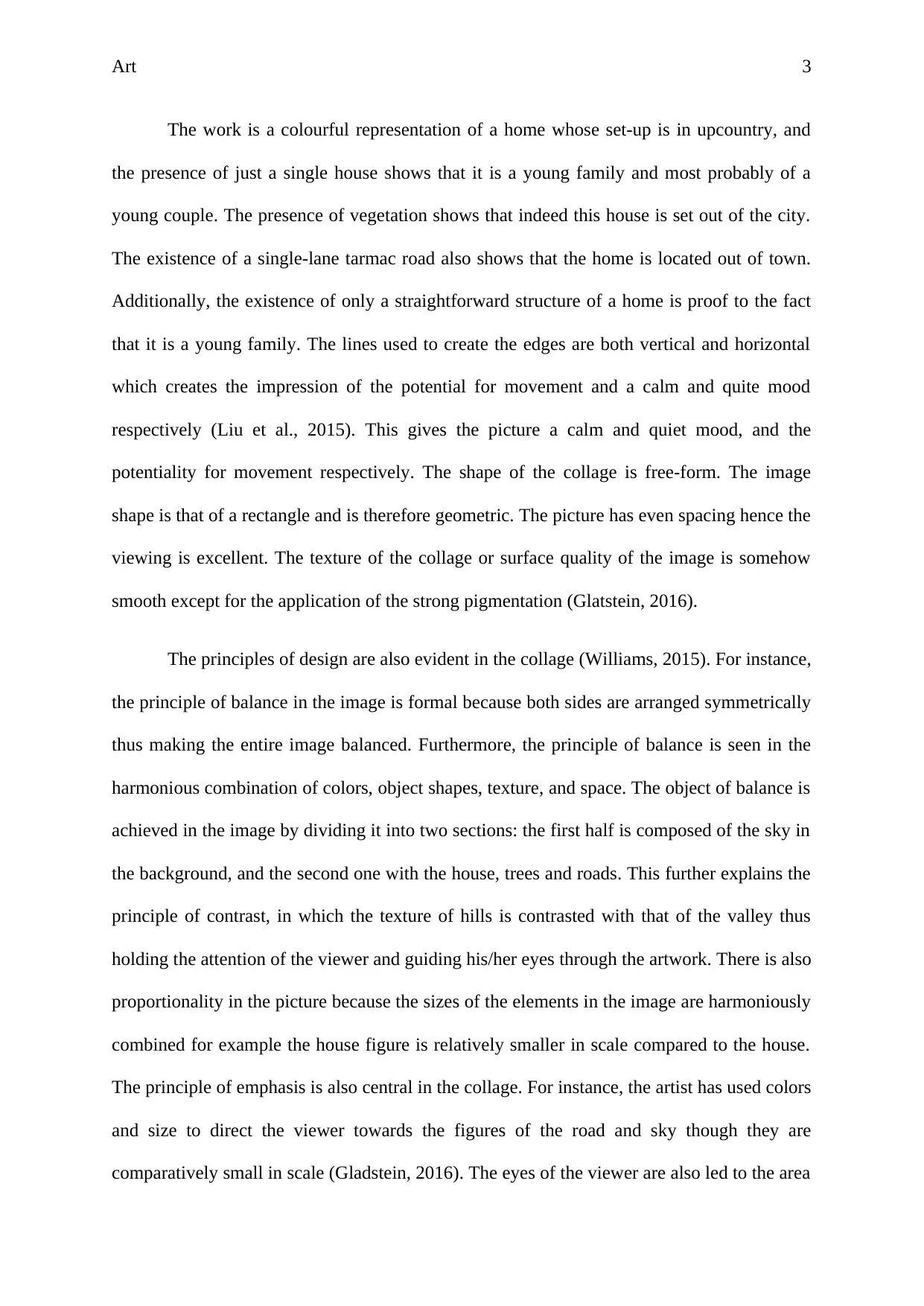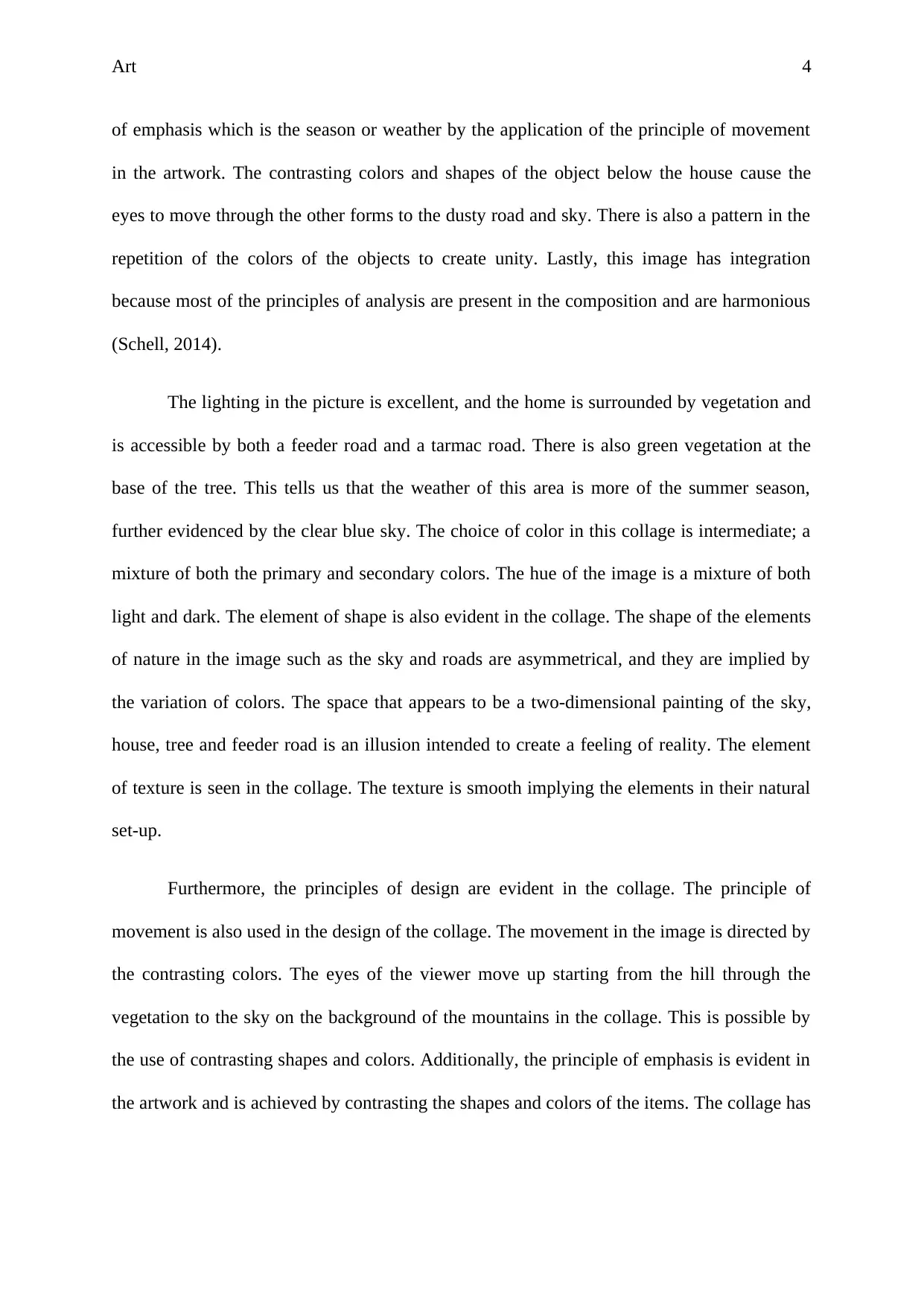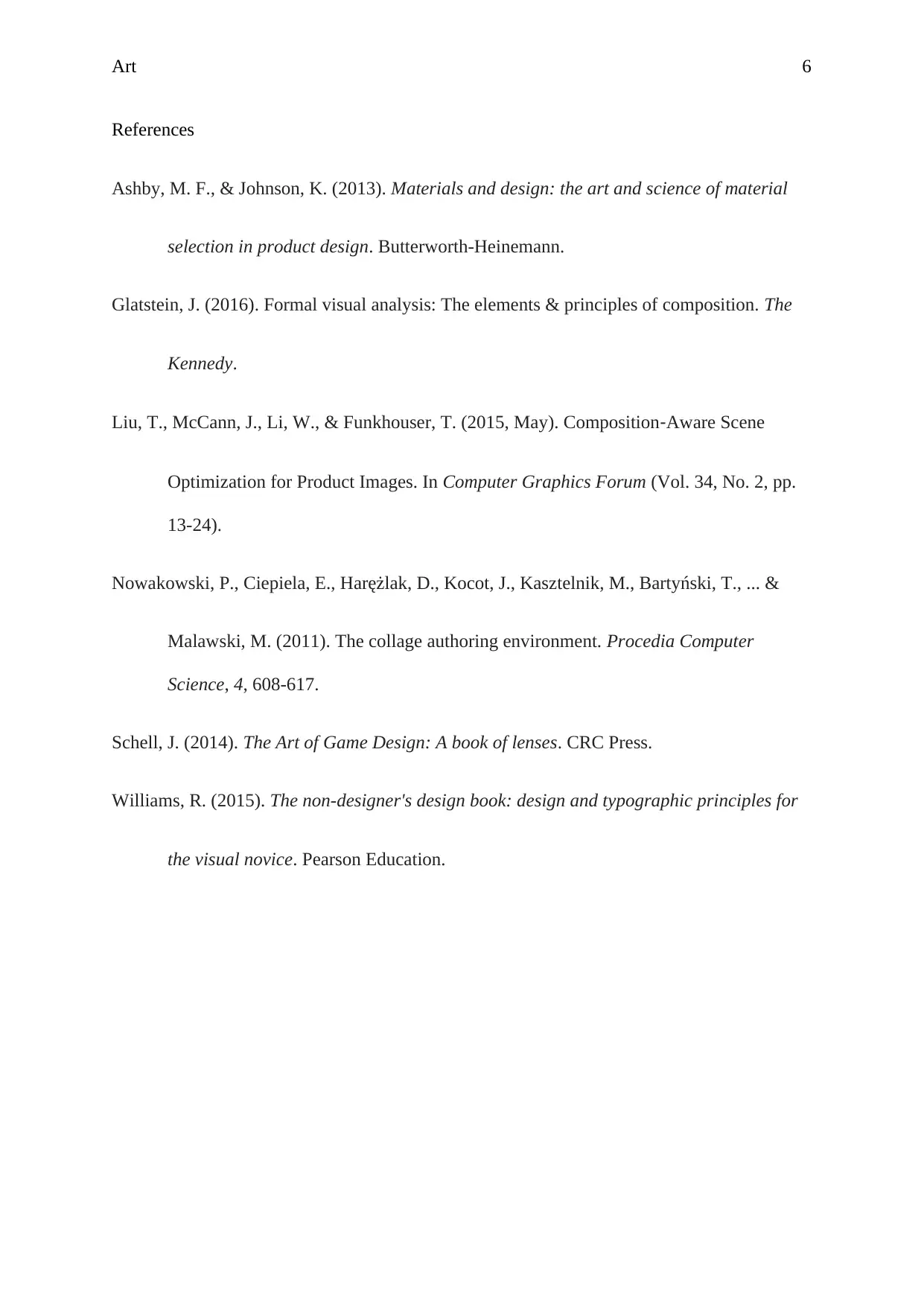Analysis of an Art I Collage: Home and Environment Composition
VerifiedAdded on 2020/05/11
|6
|1270
|361
Creative Assignment
AI Summary
This assignment is an analysis of an Art I collage depicting a home and its surrounding environment. The student begins by describing the initial stages of the project, including the theme, size, and materials used, such as plywood, scissors, glue, and newspapers. The analysis then delves into the visual elements and principles of design within the collage. The student identifies the collage as a colorful representation of a young family's home in a rural setting. They discuss the use of vertical and horizontal lines to create mood, the free-form shape, and the geometric form of the image. The analysis further examines the principles of balance, contrast, proportionality, and emphasis, illustrating how these principles contribute to the overall composition and visual impact of the artwork. The student also discusses the texture, color choices, and the illusion of space, and the lighting and weather representation within the collage. The assignment concludes by highlighting the integration of the design principles and the consistency in the use of elements throughout the composition, referencing scholarly articles to support the analysis.
1 out of 6









![[object Object]](/_next/static/media/star-bottom.7253800d.svg)